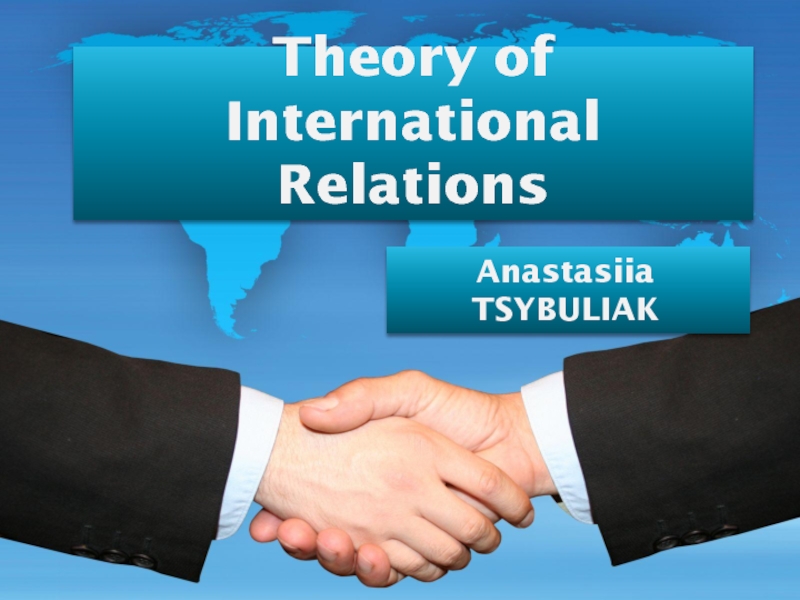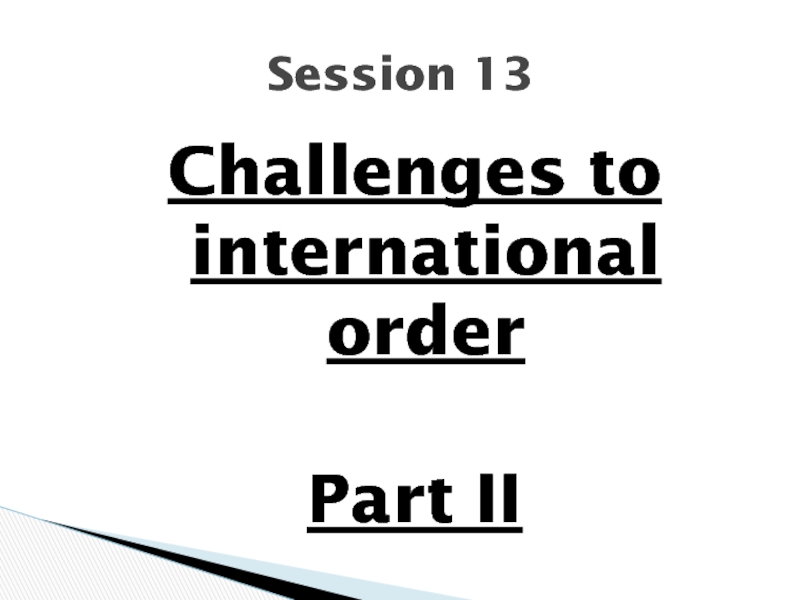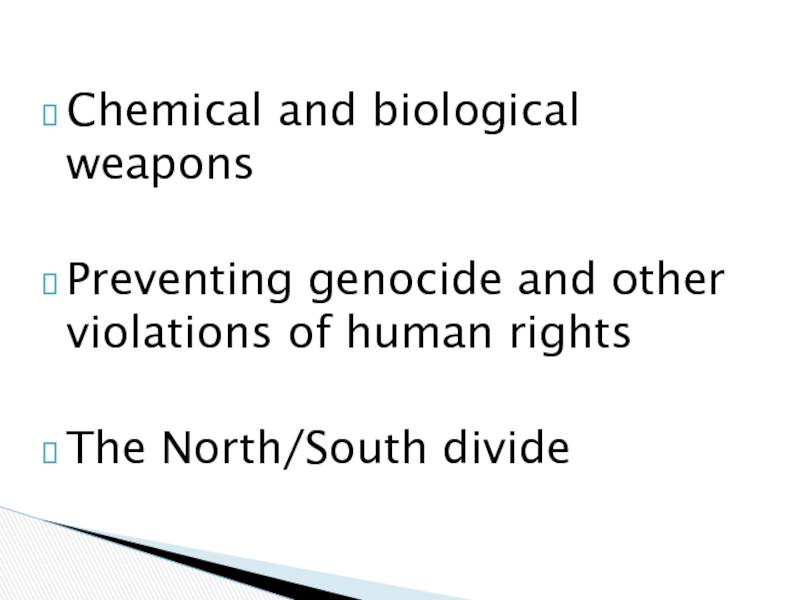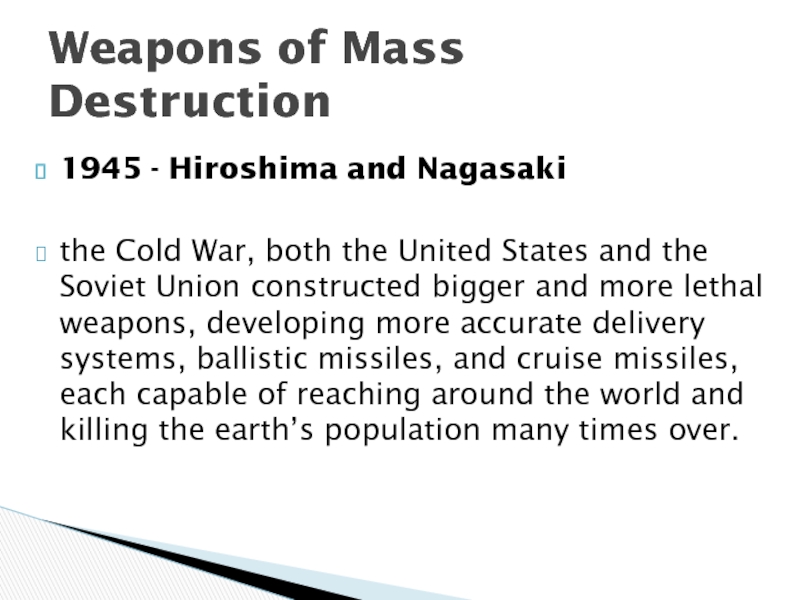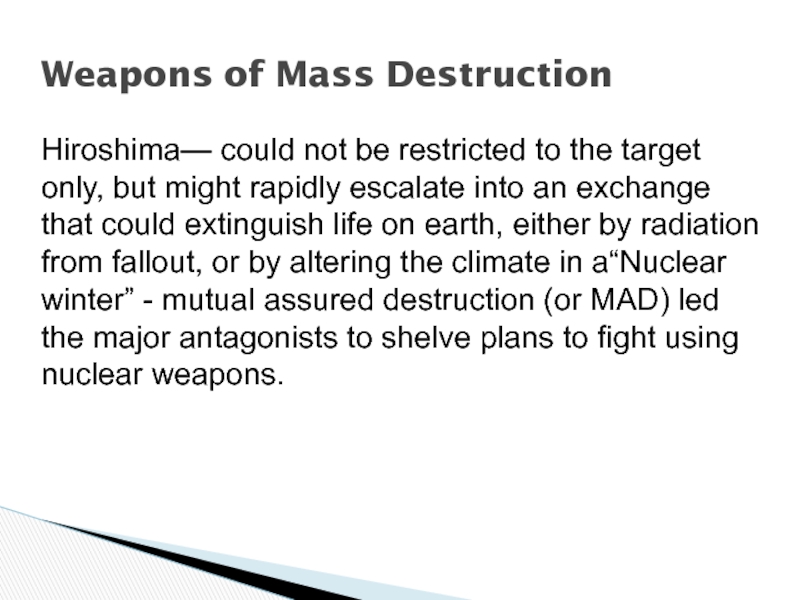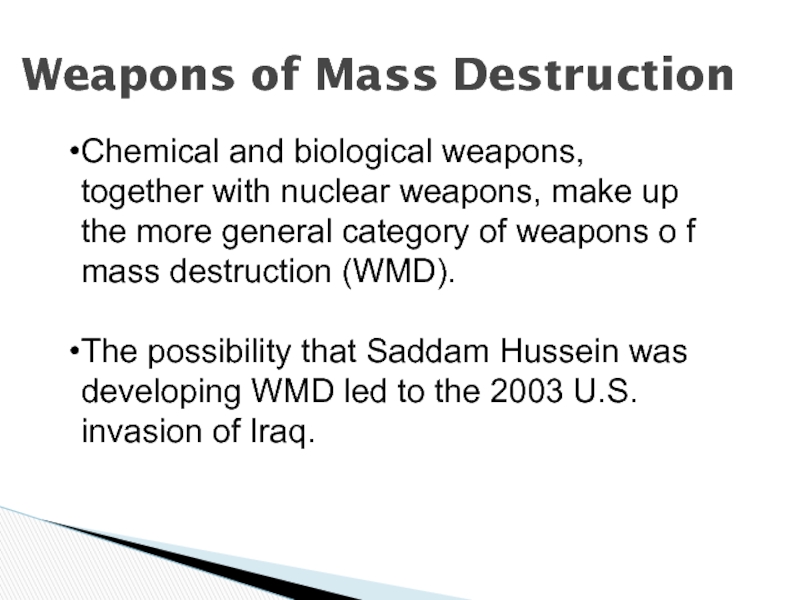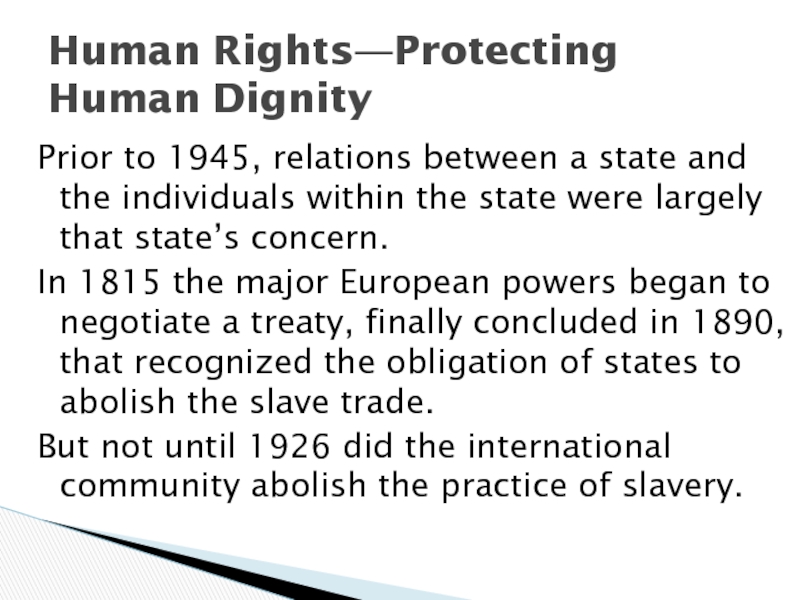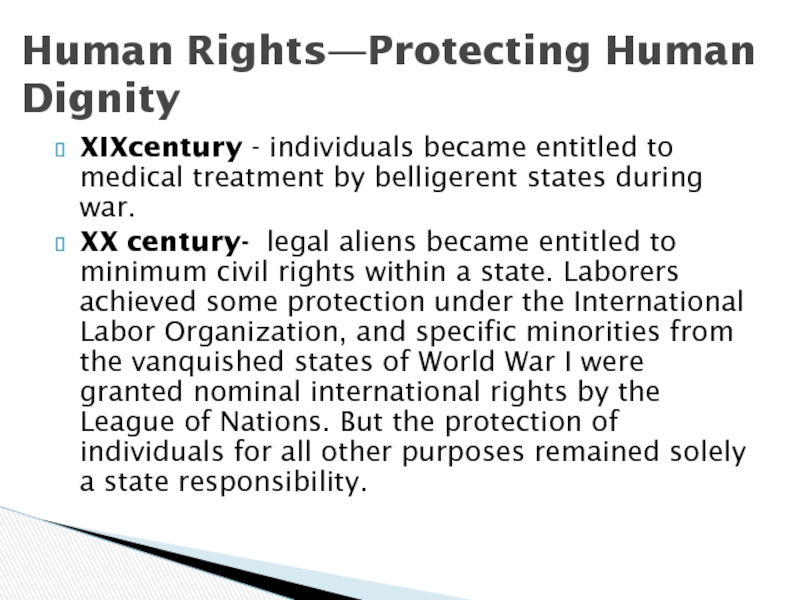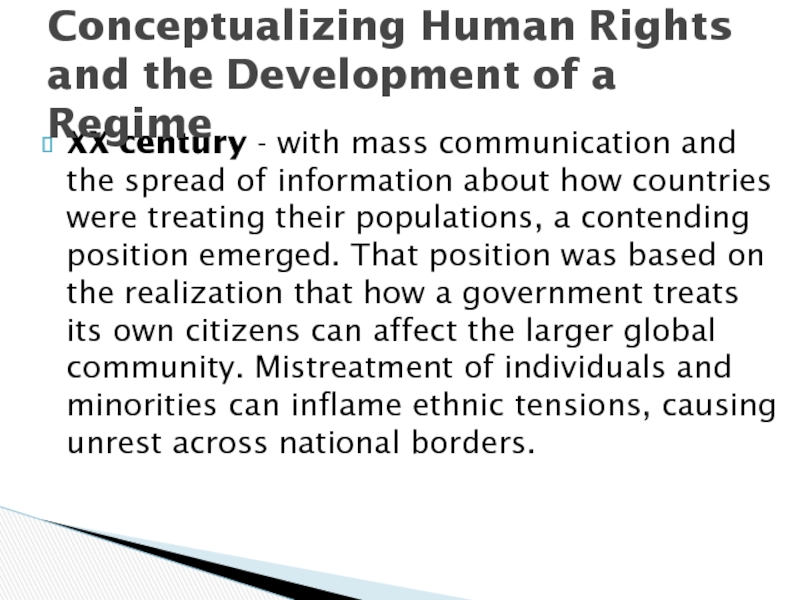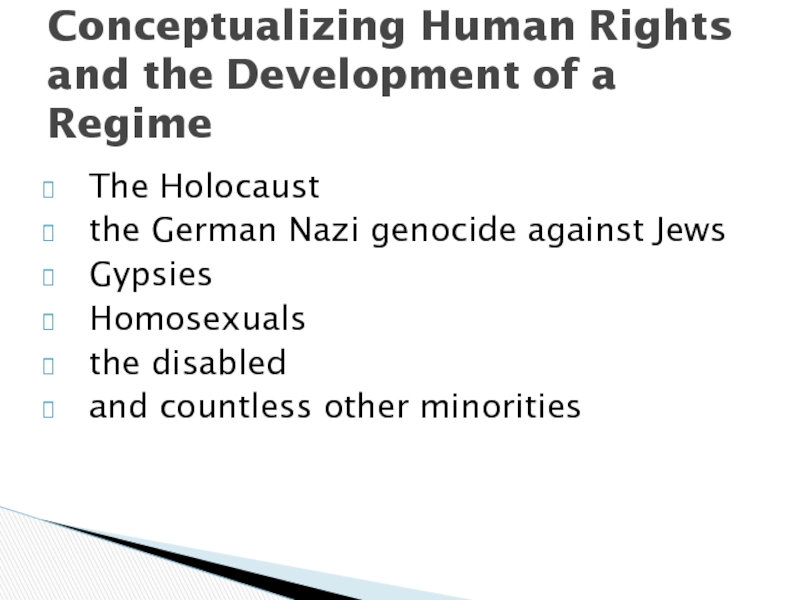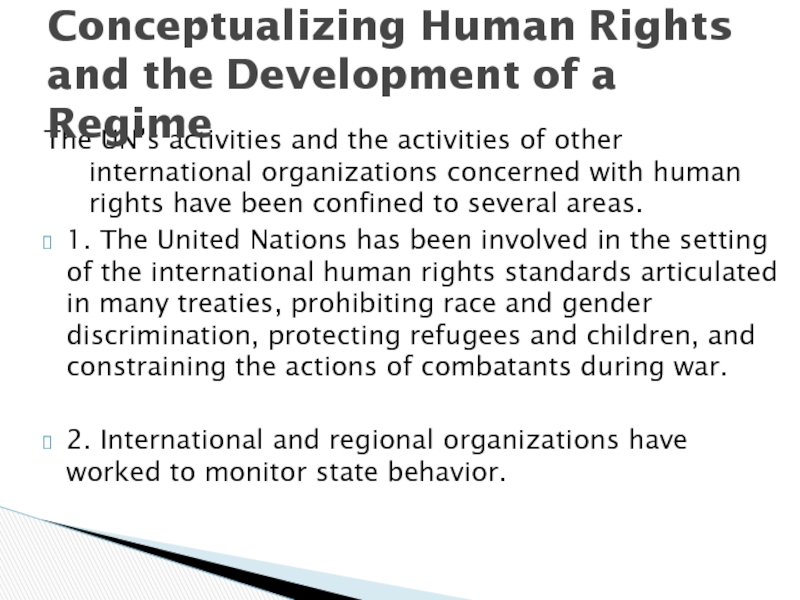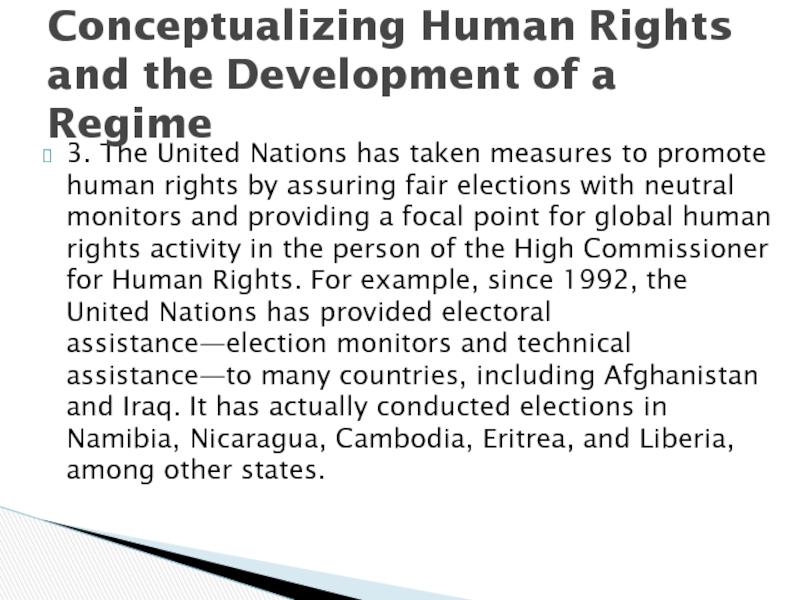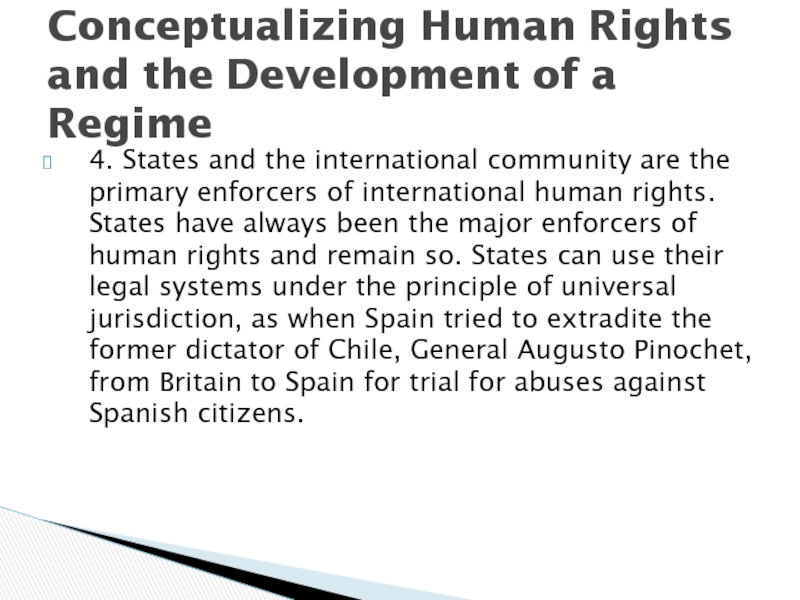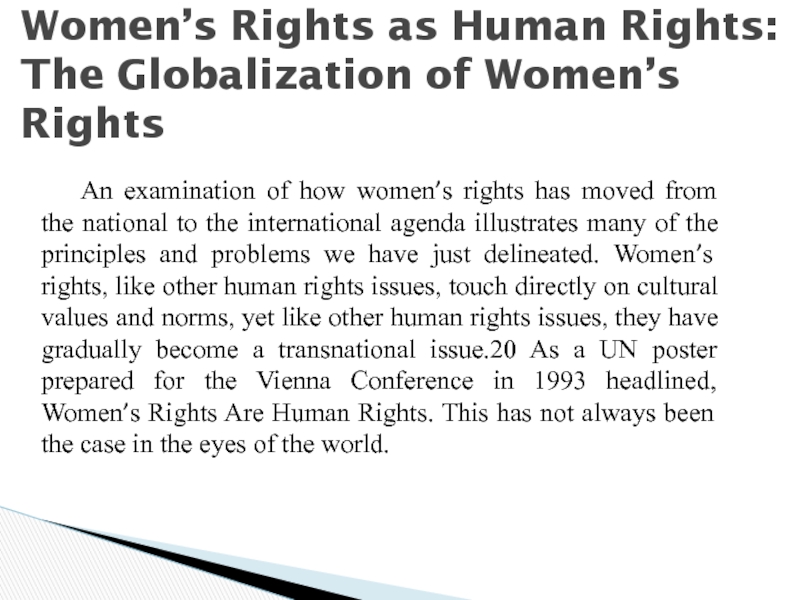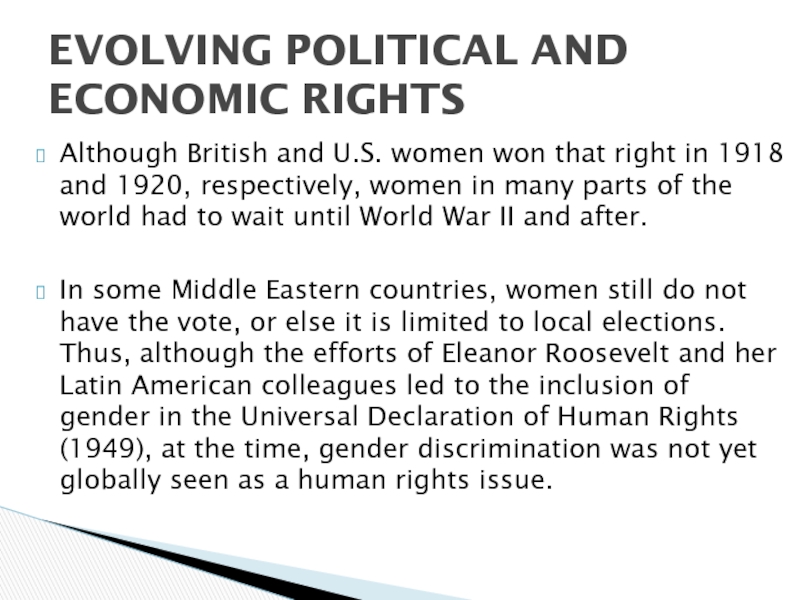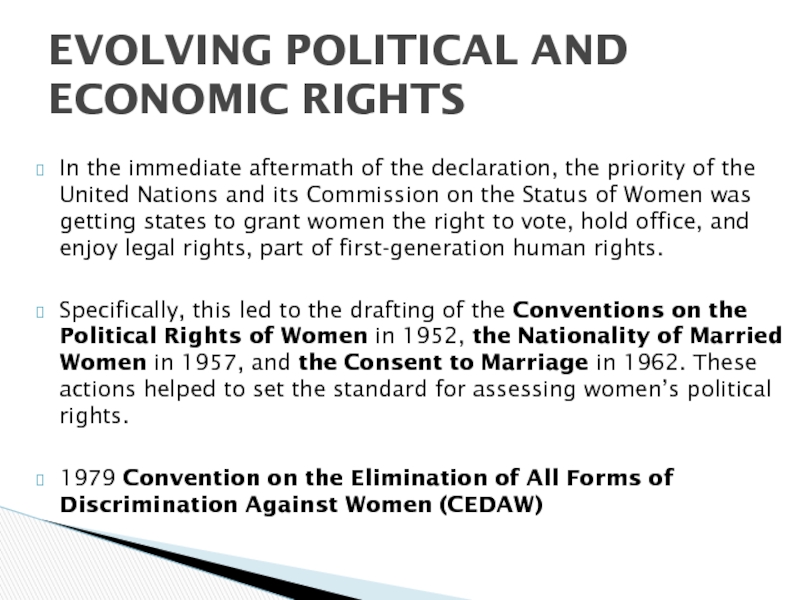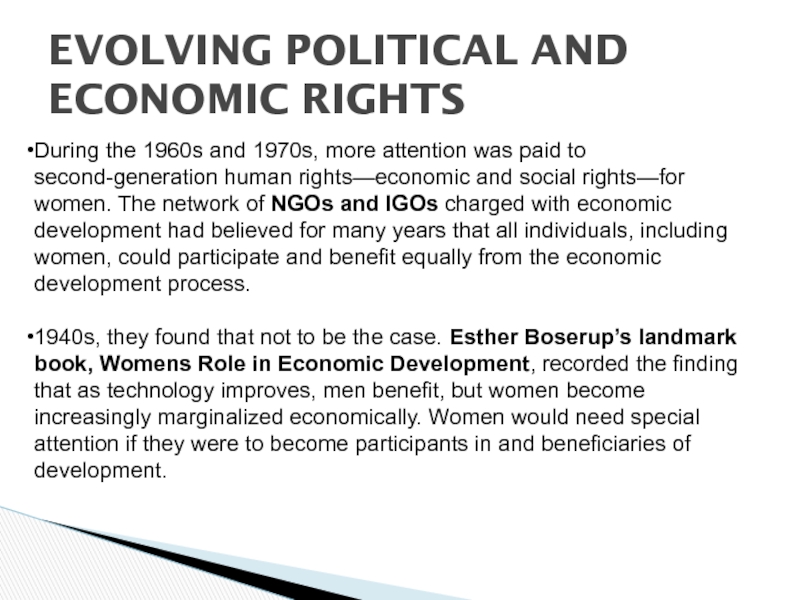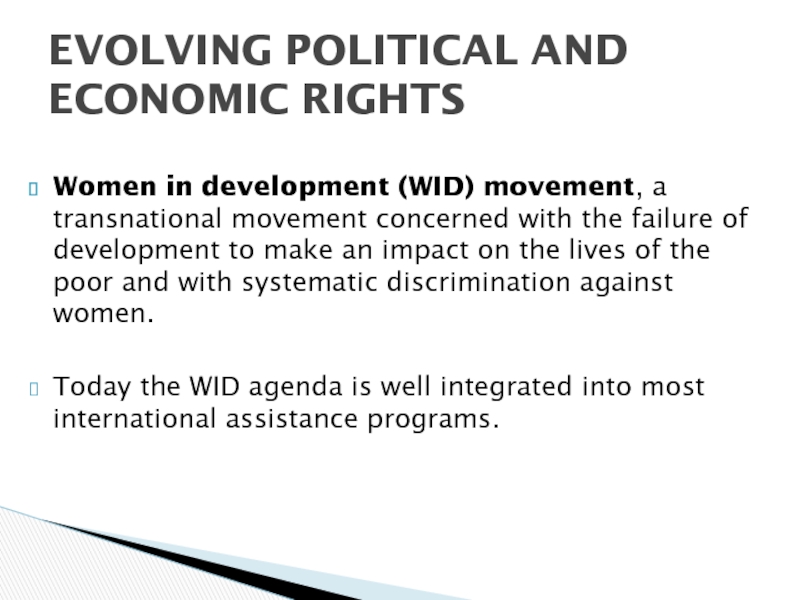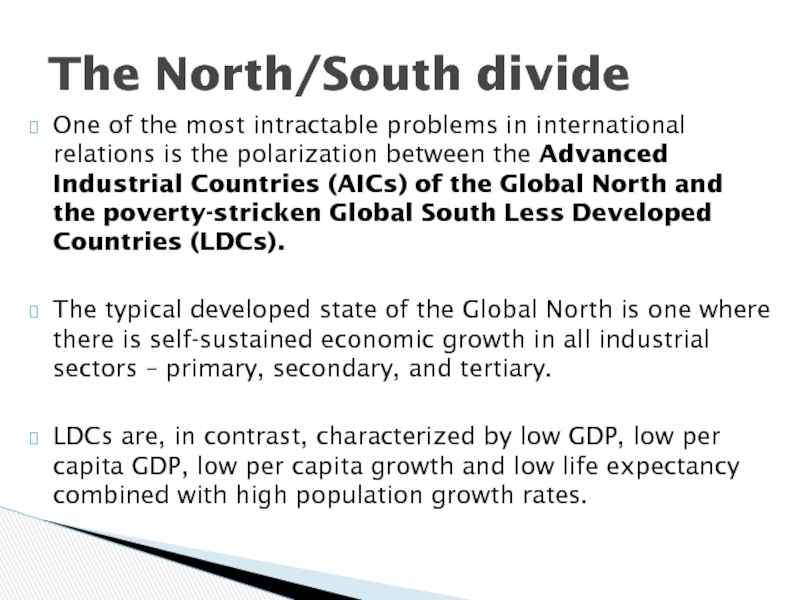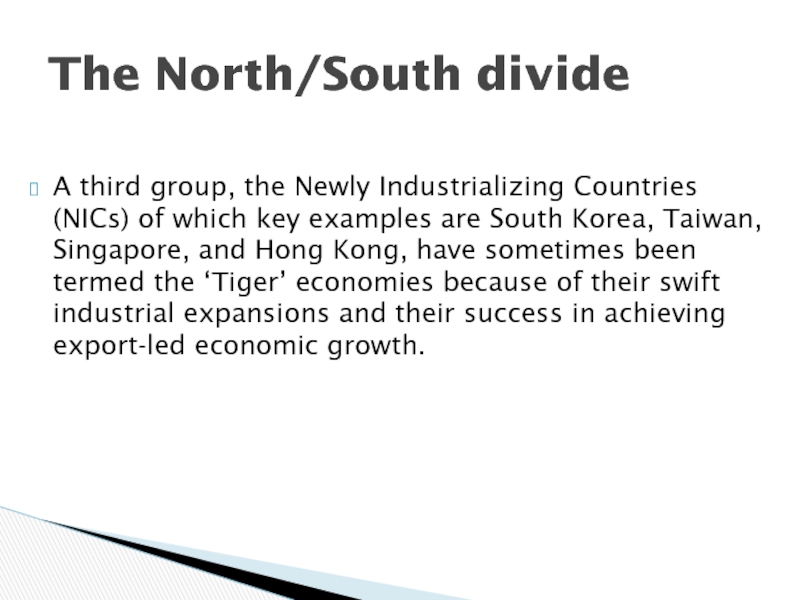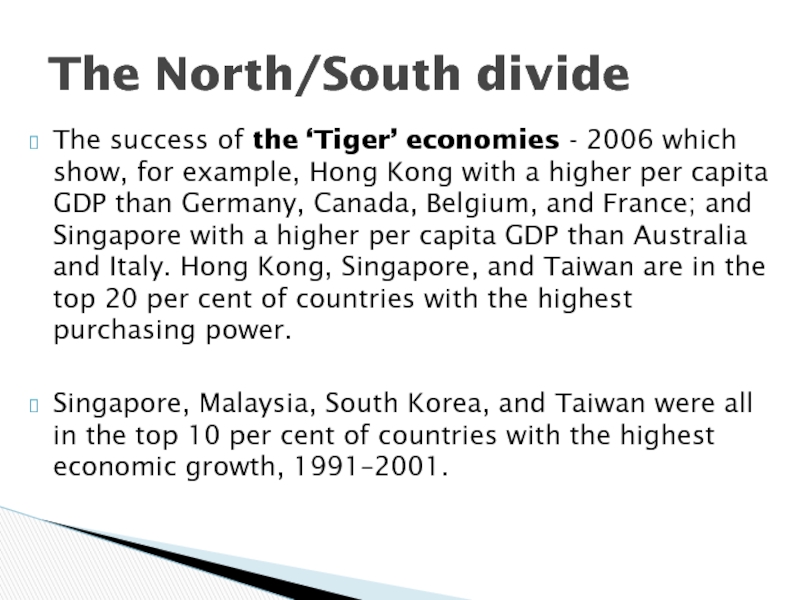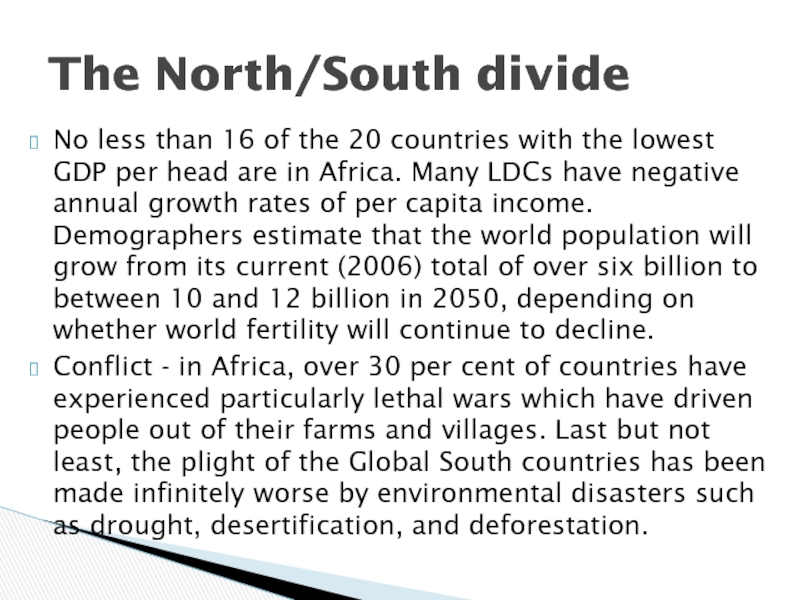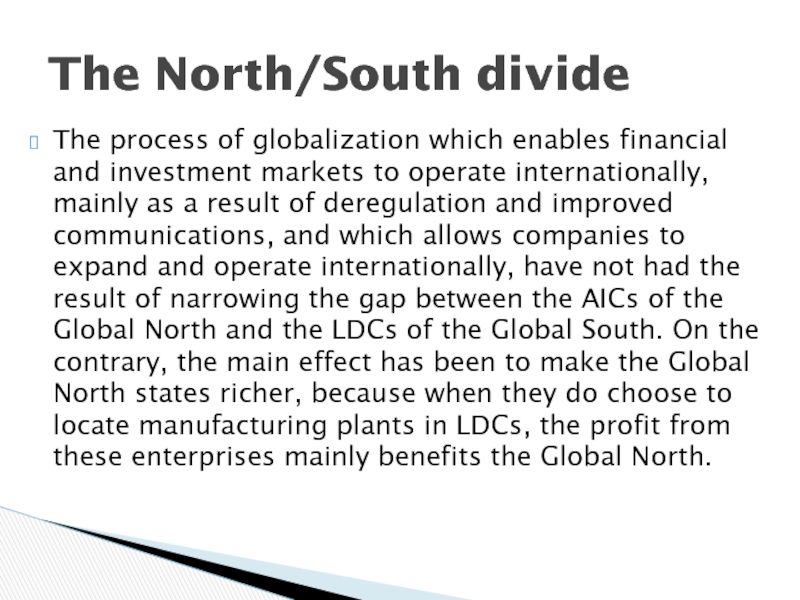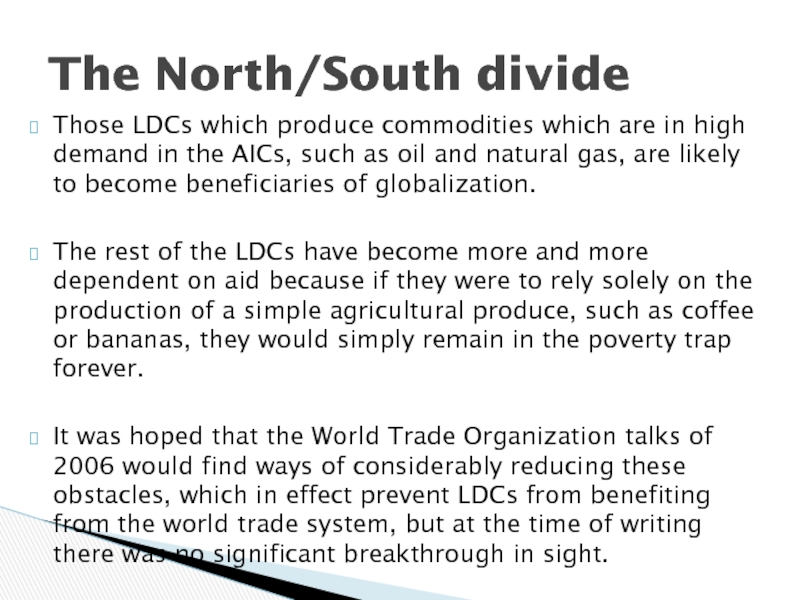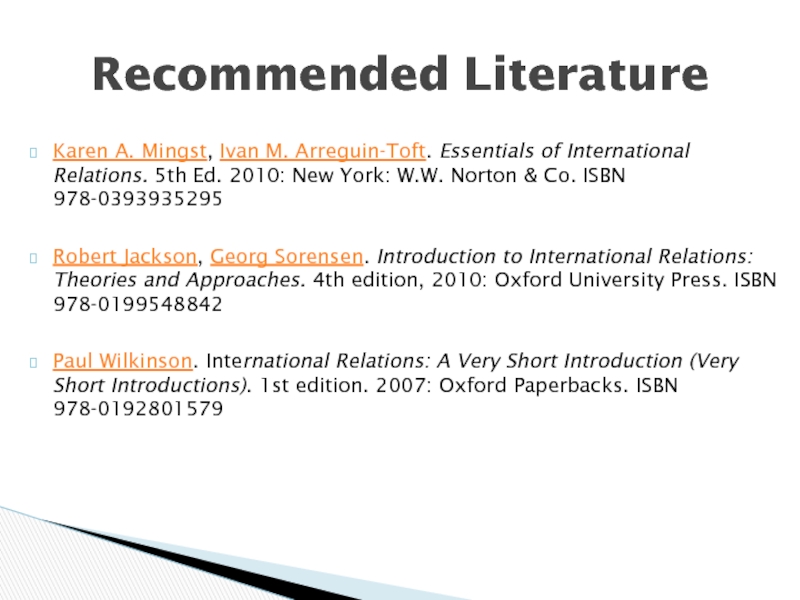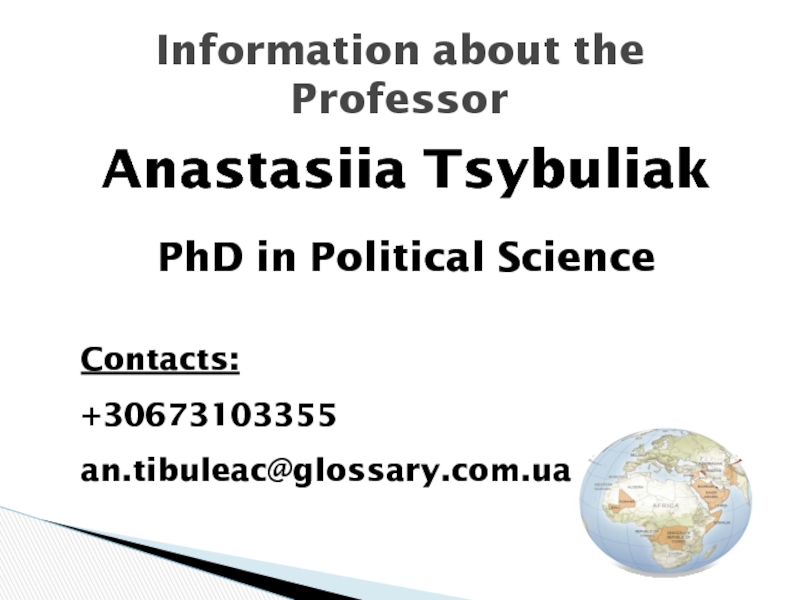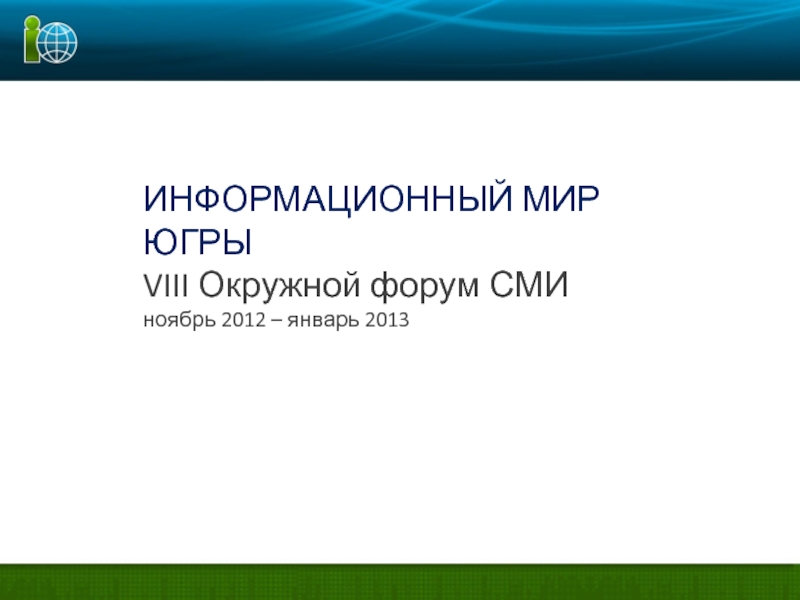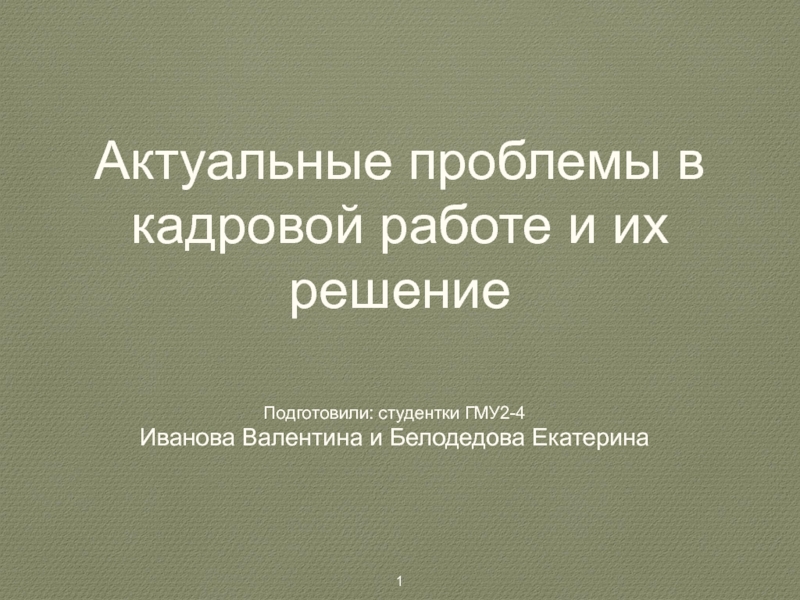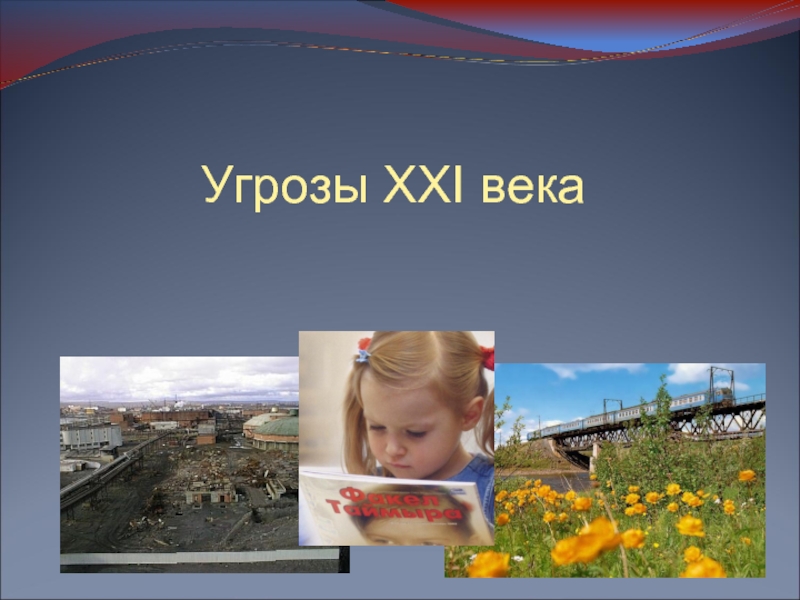- Главная
- Разное
- Дизайн
- Бизнес и предпринимательство
- Аналитика
- Образование
- Развлечения
- Красота и здоровье
- Финансы
- Государство
- Путешествия
- Спорт
- Недвижимость
- Армия
- Графика
- Культурология
- Еда и кулинария
- Лингвистика
- Английский язык
- Астрономия
- Алгебра
- Биология
- География
- Детские презентации
- Информатика
- История
- Литература
- Маркетинг
- Математика
- Медицина
- Менеджмент
- Музыка
- МХК
- Немецкий язык
- ОБЖ
- Обществознание
- Окружающий мир
- Педагогика
- Русский язык
- Технология
- Физика
- Философия
- Химия
- Шаблоны, картинки для презентаций
- Экология
- Экономика
- Юриспруденция
Challenges to international order презентация
Содержание
- 1. Challenges to international order
- 2. Challenges to international order Part II Session 13
- 3. Chemical and biological weapons Preventing genocide
- 4. 1945 - Hiroshima and Nagasaki
- 5. Weapons of Mass Destruction Hiroshima—
- 6. Weapons of Mass Destruction Chemical
- 7. Prior to 1945, relations between a state
- 8. Human Rights—Protecting Human Dignity XIXcentury - individuals
- 9. XX century - with mass communication and
- 10. The Holocaust the German Nazi genocide
- 11. The UN’s activities and the activities of
- 12. 3. The United Nations has taken measures
- 13. 4. States and the international community are
- 14. Women’s Rights as Human Rights:
- 15. Although British and U.S. women won that
- 16. In the immediate aftermath of the
- 17. EVOLVING POLITICAL AND ECONOMIC
- 18. Women in development (WID) movement, a transnational
- 19. One of the most intractable problems in
- 20. A third group, the Newly Industrializing Countries
- 21. The success of the ‘Tiger’ economies -
- 22. No less than 16 of the 20
- 23. The process of globalization which enables financial
- 24. Those LDCs which produce commodities which are
- 25. Karen A. Mingst, Ivan M. Arreguin-Toft. Essentials
- 26. Information about the Professor Anastasiia Tsybuliak PhD in Political Science Contacts: +30673103355 an.tibuleac@glossary.com.ua
Слайд 3Chemical and biological weapons
Preventing genocide and other violations of human rights
The
Слайд 4
1945 - Hiroshima and Nagasaki
the Cold War, both the United States
Weapons of Mass Destruction
Слайд 5
Weapons of Mass Destruction
Hiroshima— could not be restricted to the target
Слайд 6
Weapons of Mass Destruction
Chemical and biological weapons, together with nuclear weapons,
The possibility that Saddam Hussein was developing WMD led to the 2003 U.S. invasion of Iraq.
Слайд 7Prior to 1945, relations between a state and the individuals within
In 1815 the major European powers began to negotiate a treaty, finally concluded in 1890, that recognized the obligation of states to abolish the slave trade.
But not until 1926 did the international community abolish the practice of slavery.
Human Rights—Protecting Human Dignity
Слайд 8Human Rights—Protecting Human Dignity
XIXcentury - individuals became entitled to medical treatment
XX century- legal aliens became entitled to minimum civil rights within a state. Laborers achieved some protection under the International Labor Organization, and specific minorities from the vanquished states of World War I were granted nominal international rights by the League of Nations. But the protection of individuals for all other purposes remained solely a state responsibility.
Слайд 9XX century - with mass communication and the spread of information
Conceptualizing Human Rights and the Development of a Regime
Слайд 10
The Holocaust
the German Nazi genocide against Jews
Gypsies
Homosexuals
the disabled
and countless other
Conceptualizing Human Rights and the Development of a Regime
Слайд 11The UN’s activities and the activities of other international organizations concerned
1. The United Nations has been involved in the setting of the international human rights standards articulated in many treaties, prohibiting race and gender discrimination, protecting refugees and children, and constraining the actions of combatants during war.
2. International and regional organizations have worked to monitor state behavior.
Conceptualizing Human Rights and the Development of a Regime
Слайд 123. The United Nations has taken measures to promote human rights
Conceptualizing Human Rights and the Development of a Regime
Слайд 134. States and the international community are the primary enforcers of
Conceptualizing Human Rights and the Development of a Regime
Слайд 14
Women’s Rights as Human Rights: The Globalization of Women’s Rights
An examination
Слайд 15Although British and U.S. women won that right in 1918 and
In some Middle Eastern countries, women still do not have the vote, or else it is limited to local elections. Thus, although the efforts of Eleanor Roosevelt and her Latin American colleagues led to the inclusion of gender in the Universal Declaration of Human Rights (1949), at the time, gender discrimination was not yet globally seen as a human rights issue.
EVOLVING POLITICAL AND ECONOMIC RIGHTS
Слайд 16
In the immediate aftermath of the declaration, the priority of the
Specifically, this led to the drafting of the Conventions on the Political Rights of Women in 1952, the Nationality of Married Women in 1957, and the Consent to Marriage in 1962. These actions helped to set the standard for assessing women’s political rights.
1979 Convention on the Elimination of All Forms of Discrimination Against Women (CEDAW)
EVOLVING POLITICAL AND ECONOMIC RIGHTS
Слайд 17
EVOLVING POLITICAL AND ECONOMIC RIGHTS
During the 1960s and 1970s, more
1940s, they found that not to be the case. Esther Boserup’s landmark book, Womens Role in Economic Development, recorded the finding that as technology improves, men benefit, but women become increasingly marginalized economically. Women would need special attention if they were to become participants in and beneficiaries of development.
Слайд 18Women in development (WID) movement, a transnational movement concerned with the
Today the WID agenda is well integrated into most international assistance programs.
EVOLVING POLITICAL AND ECONOMIC RIGHTS
Слайд 19One of the most intractable problems in international relations is the
The typical developed state of the Global North is one where there is self-sustained economic growth in all industrial sectors – primary, secondary, and tertiary.
LDCs are, in contrast, characterized by low GDP, low per capita GDP, low per capita growth and low life expectancy combined with high population growth rates.
The North/South divide
Слайд 20A third group, the Newly Industrializing Countries (NICs) of which key
The North/South divide
Слайд 21The success of the ‘Tiger’ economies - 2006 which show, for
Singapore, Malaysia, South Korea, and Taiwan were all in the top 10 per cent of countries with the highest economic growth, 1991–2001.
The North/South divide
Слайд 22No less than 16 of the 20 countries with the lowest
Conflict - in Africa, over 30 per cent of countries have experienced particularly lethal wars which have driven people out of their farms and villages. Last but not least, the plight of the Global South countries has been made infinitely worse by environmental disasters such as drought, desertification, and deforestation.
The North/South divide
Слайд 23The process of globalization which enables financial and investment markets to
The North/South divide
Слайд 24Those LDCs which produce commodities which are in high demand in
The rest of the LDCs have become more and more dependent on aid because if they were to rely solely on the production of a simple agricultural produce, such as coffee or bananas, they would simply remain in the poverty trap forever.
It was hoped that the World Trade Organization talks of 2006 would find ways of considerably reducing these obstacles, which in effect prevent LDCs from benefiting from the world trade system, but at the time of writing there was no significant breakthrough in sight.
The North/South divide
Слайд 25
Karen A. Mingst, Ivan M. Arreguin-Toft. Essentials of International Relations. 5th Ed.
Robert Jackson, Georg Sorensen. Introduction to International Relations: Theories and Approaches. 4th edition, 2010: Oxford University Press. ISBN 978-0199548842
Paul Wilkinson. International Relations: A Very Short Introduction (Very Short Introductions). 1st edition. 2007: Oxford Paperbacks. ISBN 978-0192801579
Recommended Literature
